A Rich and Colorful
HISTORY

1860
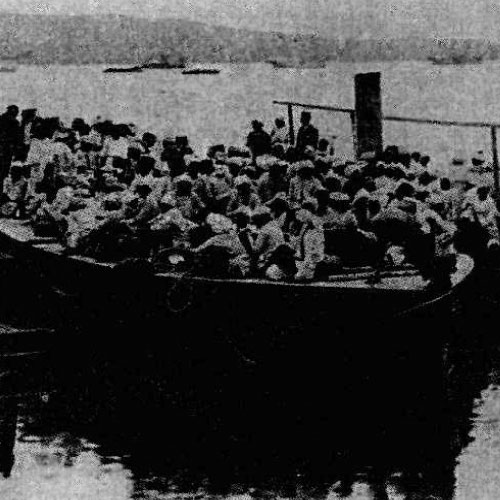 “The start of a new life. Freshly indentured Indian labourers” – Addington Beach
“The start of a new life. Freshly indentured Indian labourers” – Addington BeachIndentured Indian labourers arrive at the Point – Durban, for immigration to process their documents.
1865
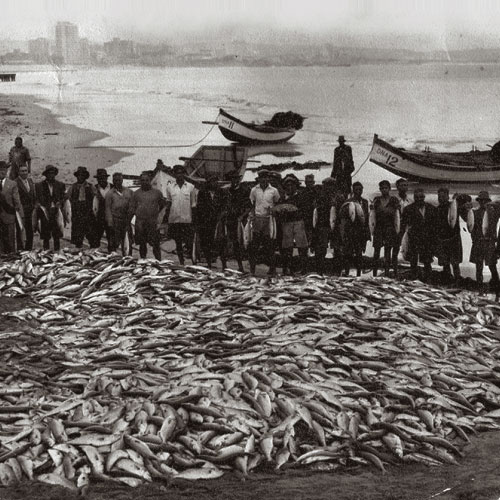 The Durban seine-netter community traces back to 1865, when indentured labourers left the harsh conditions of the cane fields to start a new life on Salisbury Island. They pioneered this form of fishing using dragnets and oar-driven banana boats. By 1885 the seine-netters owned 12
The Durban seine-netter community traces back to 1865, when indentured labourers left the harsh conditions of the cane fields to start a new life on Salisbury Island. They pioneered this form of fishing using dragnets and oar-driven banana boats. By 1885 the seine-netters owned 12boats, employing 150 people but five years later they were forced off the island and sent to Addington Beach. They also thrived here employing 1000 fishermen by 1940 and had 150 boats. The community grew and built schools and palatial houses on the water’s edge. The area spawned several notable residents, among them the heroic Padavatan Six, who used their sea-faring expertise to overcome the treacherous floods of 1917 to save 176 market gardeners. Apartheid eventually prevailed in 1963 when they were banished to Chatsworth, 25km away from the sea – finally putting an end to a century-old industry.
1880
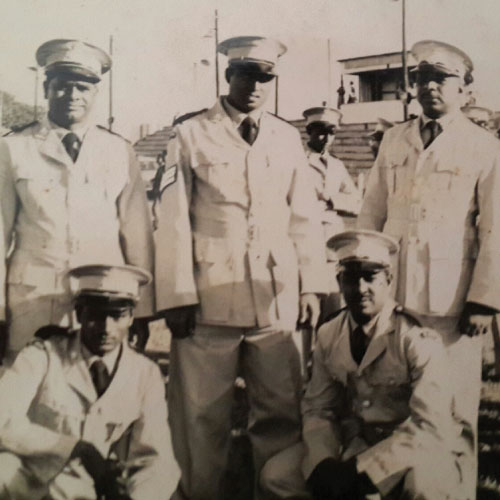 Magazine Barracks was an area that accommodated Indian labourers, who worked for the Durban Corporation (municipality). Built in 1880, it had a population of up to 7000 people at times, residing in 1251 rooms. Living conditions were repressive due to the unwillingness of authorities to upgrade. There was also evidence of malnutrition because of poor salaries and inappropriate rations. Despite these hardships, the community was politically active. Trade union movement, DIMES led the way putting pressure on authorities to improve conditions. On 26 June 1950 the ANC called for a nation-wide strike. All municipal workers complied. The municipality responded by dismissing a huge number of employees, many who remained unemployed for the rest of their lives. In spite of these trying conditions, this community produced notable stalwarts, among them International Olympic Committee member,Sam Ramsamy; African National Congress and SA Communist Party veteran, Swaminathan Gounden and famous soccerites, the Matambu Brothers. The Barracks community was forcibly removed under the Group Areas Act and relocated in Chatsworth in the 1960s.
Magazine Barracks was an area that accommodated Indian labourers, who worked for the Durban Corporation (municipality). Built in 1880, it had a population of up to 7000 people at times, residing in 1251 rooms. Living conditions were repressive due to the unwillingness of authorities to upgrade. There was also evidence of malnutrition because of poor salaries and inappropriate rations. Despite these hardships, the community was politically active. Trade union movement, DIMES led the way putting pressure on authorities to improve conditions. On 26 June 1950 the ANC called for a nation-wide strike. All municipal workers complied. The municipality responded by dismissing a huge number of employees, many who remained unemployed for the rest of their lives. In spite of these trying conditions, this community produced notable stalwarts, among them International Olympic Committee member,Sam Ramsamy; African National Congress and SA Communist Party veteran, Swaminathan Gounden and famous soccerites, the Matambu Brothers. The Barracks community was forcibly removed under the Group Areas Act and relocated in Chatsworth in the 1960s.1885
As the British moved further into the province of Natal, there was a need to build a network of trains to transport civilians, the military and goods. The Railways employed a large number of indentured Indians and many of them were subjected to ill-treatment. In 1885, John James (Coolie No. 2309) smuggled out a written complaint to the then Protector of Immigrants. In his written submission, which was written in the Railways Station Building in Durban, he exposed:
-
-
- • Labourers were fined an entire month’s salary for trivial offences.
-
- • Held in a prison, at times in solitary confinement and a “spare diet.”
-
- • Indians were victims of hatred and revenge.
-
• That the punishments made “even angels weep.”
James wrote: “We have left our independent shores and come to this dependent shore, with every assurance of being well looked after. Not to be treated with cruelties, that every English soul detests.”
1890
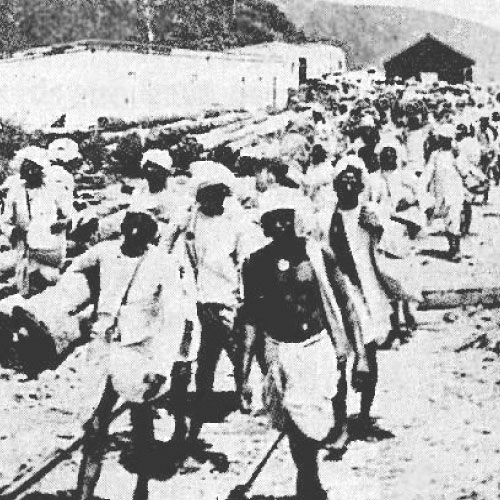 By 1890 the demand for labour on sugar cane plantations in Natal had increased, resulting in feverish activity to recruit from various parts of India. Within 14 years, as a result of the aggressive recruitment, Indians started outnumbering the white population. At that point the region had a total population of 1 102 027, comprising 904 000 Africans, 100 918 Indians and 97 109 whites. As a result of Indian labour, Natal progressed becoming the most flourishing of all British colonies. By 1911 there were 152 184 Indians, 62% men, 25% women and 13% children. The period of exploitation however, was brought to an abrupt end that year when India banned future indentureship, due to poor working conditions and severe ill-treatment.
By 1890 the demand for labour on sugar cane plantations in Natal had increased, resulting in feverish activity to recruit from various parts of India. Within 14 years, as a result of the aggressive recruitment, Indians started outnumbering the white population. At that point the region had a total population of 1 102 027, comprising 904 000 Africans, 100 918 Indians and 97 109 whites. As a result of Indian labour, Natal progressed becoming the most flourishing of all British colonies. By 1911 there were 152 184 Indians, 62% men, 25% women and 13% children. The period of exploitation however, was brought to an abrupt end that year when India banned future indentureship, due to poor working conditions and severe ill-treatment.The need for labour on the sugar cane plantations of Natal had become critical. White farmers were desperate as they clamoured for Indians to save them from ruin.
It was under these circumstances that local farmers appealed to authorities to permit Indian indentureship in South Africa, resulting in the arrival of the first batch of workers in 1860.
1898-1908
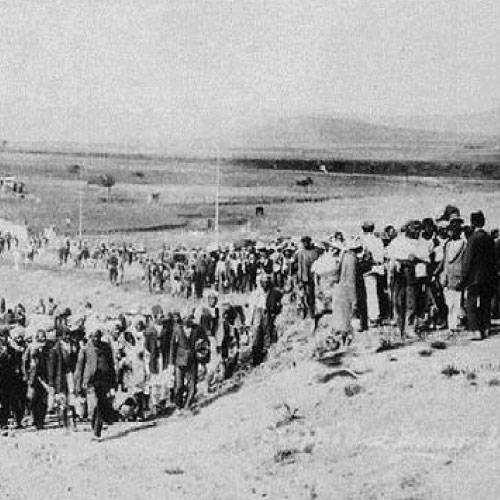 The conditions of indentured Indian miners were worse than that of their kin on sugarcane plantations. Underground workers spent long hours in dark pits for just 15 shillings a month. Those lucky enough to get work above ground, earned three shillings less. Wood and iron shacks with no sanitation and water made life unbearable. In spite of this, Indians contributed to 38% of the total mine workforce in Natal between 1898 and 1908. The mortality rate was extremely high and in 1903 an official enquiry found that respiratory and digestive diseases caused 27% and 16% of Indian deaths. It was only then that regulations were introduced forcing mines to build houses of brick and stone with proper flooring, roofing, ventilation, chimneys and washing facilities.
The conditions of indentured Indian miners were worse than that of their kin on sugarcane plantations. Underground workers spent long hours in dark pits for just 15 shillings a month. Those lucky enough to get work above ground, earned three shillings less. Wood and iron shacks with no sanitation and water made life unbearable. In spite of this, Indians contributed to 38% of the total mine workforce in Natal between 1898 and 1908. The mortality rate was extremely high and in 1903 an official enquiry found that respiratory and digestive diseases caused 27% and 16% of Indian deaths. It was only then that regulations were introduced forcing mines to build houses of brick and stone with proper flooring, roofing, ventilation, chimneys and washing facilities.